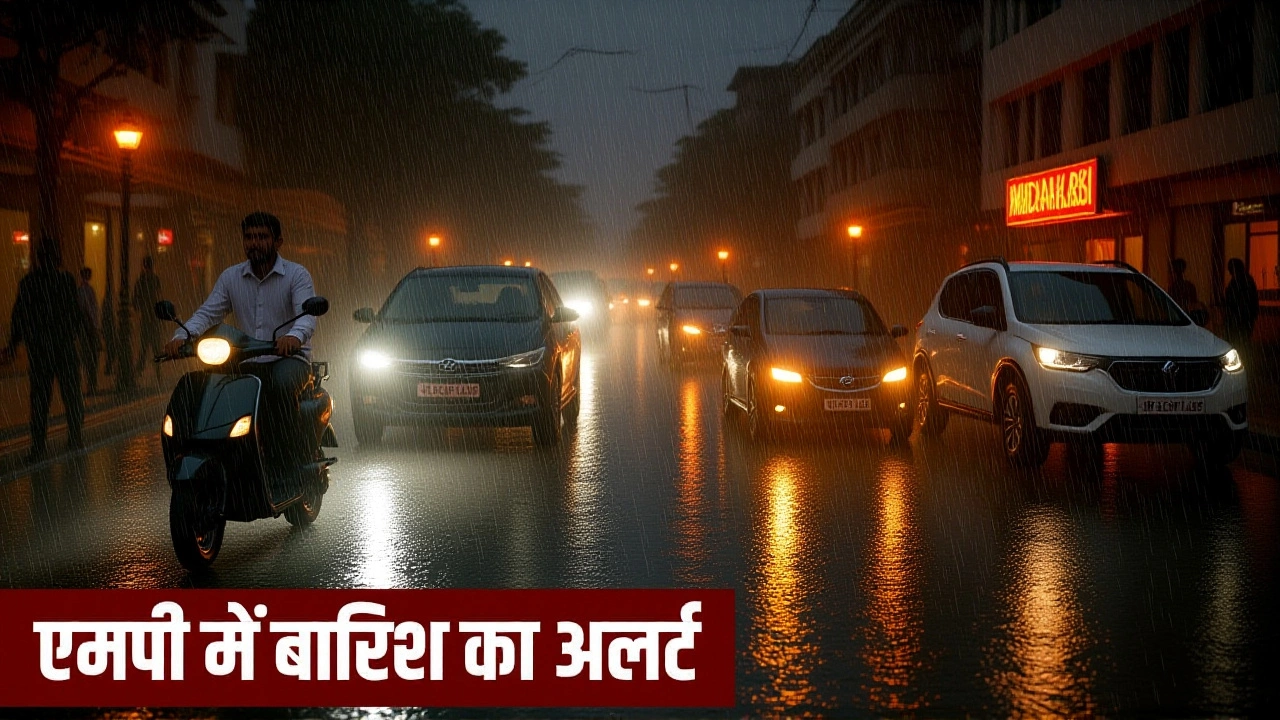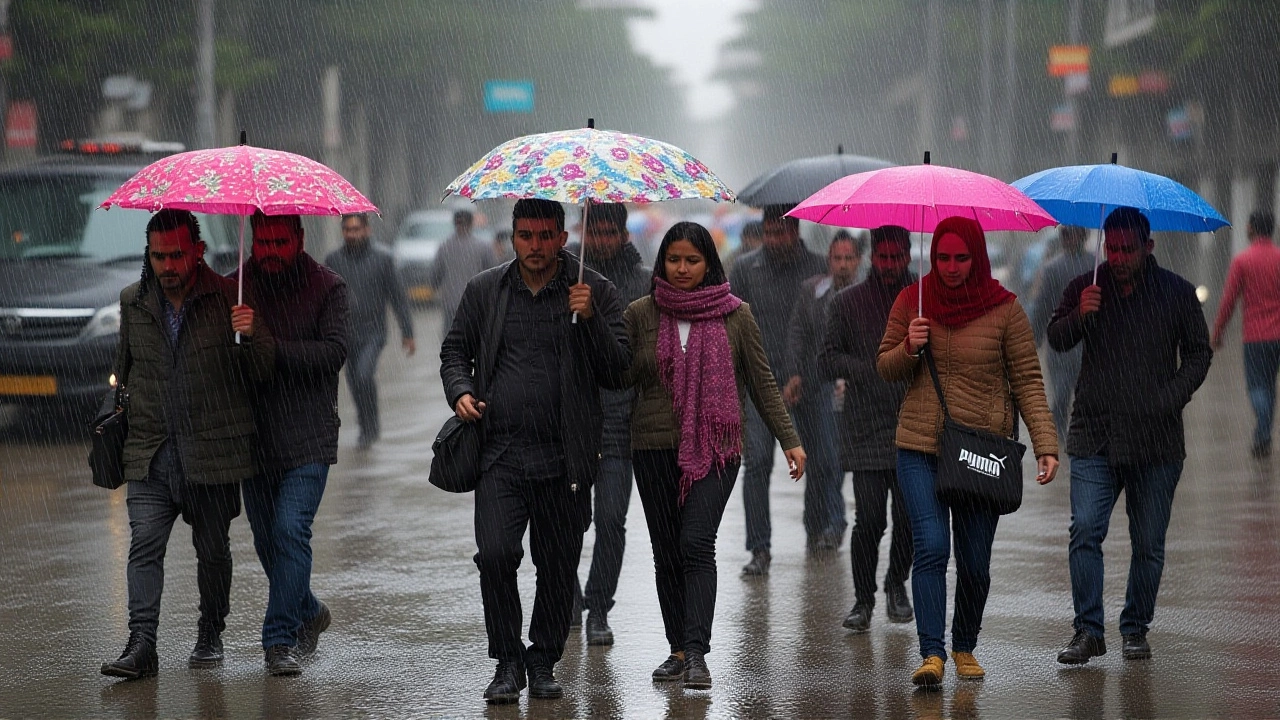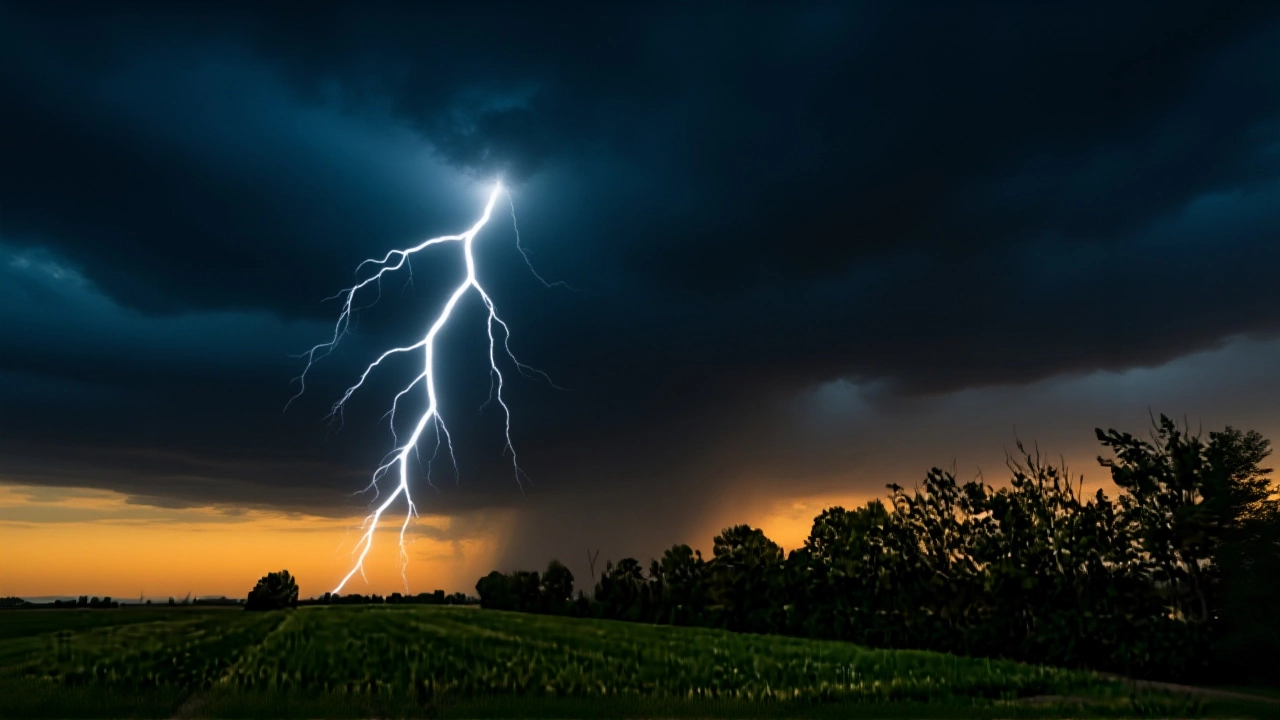By Tuesday evening, October 28, 2025, Cyclone Montha had transformed from a tropical disturbance into a terrifying force, its 90-100 km/h winds whipping across the Bay of Bengal and bearing down on the Andhra Pradesh coast near Kakinada. The India Meteorological Department confirmed the storm’s intensification at 5:30 AM that day, with gusts hitting 110 km/h — enough to rip roofs, snap power lines, and turn streets into rivers. What made this storm different wasn’t just its strength, but the timing: landfall came just as families were returning home from work, and the sea was at its highest tide. By nightfall, the Machilipatnam-Kalingapatnam stretch was bracing for the worst.
Disruptions Across the Coast
The chaos began hours before landfall. In Visakhapatnam, 43 trains — including key routes like IX2743 Hyderabad-Vijayawada — were scrapped. All flights from Visakhapatnam Airport were grounded, leaving hundreds stranded. Cyclone Montha didn’t just threaten; it paralyzed. IndiGo and Air India Express didn’t just delay — they canceled. No flights in or out until Wednesday morning. Even the roads were shutting down. The India Meteorological Department warned of 5.8-meter waves — nearly two stories high — crashing into coastal roads from Chennai to Kakinada. At Marina Beach, people watched in silence as the sea clawed at the promenade, swallowing benches and umbrellas.Tragedy in Kerala: Two Dead Before Landfall
While Andhra Pradesh prepared, Kerala paid the first price. Since Sunday night, October 26, 2025, heavy rain from Cyclone Montha and a separate depression in the Arabian Sea had turned low-lying areas into lakes. By Monday morning, the India Meteorological Department upgraded six districts — Ernakulam, Thrissur, Idukki, Kozhikode, Kannur, and Wayanad — to orange alert. The rain didn’t stop. It poured. Then came the deaths. Paul Devasia, a 52-year-old fisherman from Arthunkal in Alappuzha, was out fishing when his boat capsized. Rescuers pulled him from the water — alive, but barely. He died hours later in a local hospital. Around the same time, 45-year-old Kokhan Misthri, a migrant worker from West Bengal, was struck by lightning while inside his rented home in Mukanoor, near Kochi. The storm wasn’t even over, and two lives were already gone.Why This Storm Was Different
What’s unusual about Cyclone Montha isn’t just its speed — it’s the environment it’s moving through. Wind shear above 55 km/h and dry air swirling into its northeastern edge should have weakened it faster. But it didn’t. The system held together, feeding on unusually warm sea surface temperatures — 29.5°C in the central Bay of Bengal, well above the 28°C threshold for cyclone intensification. The Joint Typhoon Warning Center noted strong model agreement on the track, but even they were surprised by its resilience. “It’s not the strongest cyclone we’ve seen this season,” said one senior forecaster, speaking off-record. “But it’s the one that caught everyone off guard because it didn’t follow the script.”
What Happens After Landfall?
The good news? Cyclone Montha won’t last long over land. The Joint Typhoon Warning Center predicts it will weaken to 75 km/h within 12 hours of landfall and dissipate completely before 24 hours. That’s typical for Bay of Bengal cyclones — they’re fast, fierce, and fleeting. But here’s the catch: even a weakening storm dumps massive rain. The India Meteorological Department has warned of 100-150 mm of rainfall over Andhra Pradesh and northern Tamil Nadu through Wednesday. Flash floods are expected in low-lying areas near Kakinada, Rajahmundry, and Vijayawada.What’s Next?
Relief teams are already moving. The National Disaster Response Force has pre-positioned 12 teams across coastal districts. The Indian Air Force is on standby with helicopters. But the real challenge begins after the winds die down: power lines down, roads blocked, water contaminated. Thousands of homes in Kakinada and nearby villages lost roofs. Many families are sheltering in schools turned into relief camps. The India Meteorological Department says the next 72 hours are critical — not for more storms, but for rescue and recovery.
Historical Context: How Often Does This Happen?
Cyclones hitting the Andhra Pradesh coast aren’t rare — but severe ones like Cyclone Montha are becoming more frequent. Since 2010, six severe cyclones have made landfall between Machilipatnam and Kalingapatnam. The last one, Cyclone Gulab in 2021, killed 18 people and caused $320 million in damage. What’s changed? Warmer oceans. Slower-moving systems. More erratic wind patterns. Scientists at the Indian Institute of Tropical Meteorology say the Bay of Bengal is now warming 0.2°C faster per decade than the global average. That means more energy for storms — and fewer chances to prepare.Frequently Asked Questions
How dangerous is a 90-100 km/h wind speed?
Winds of 90-100 km/h can uproot trees, collapse weak buildings, and send unsecured objects flying like projectiles. At this speed, even small vehicles can be tipped over. Power lines snap, leaving entire neighborhoods without electricity for days. The India Meteorological Department classifies this as a ‘severe cyclonic storm’ — the second-highest category before ‘very severe.’
Why did Cyclone Montha kill people in Kerala before reaching Andhra Pradesh?
Even before landfall, cyclones generate strong winds, heavy rain, and rough seas hundreds of kilometers away. Paul Devasia died because his fishing boat was caught in sudden, violent waves off Alappuzha — a coastal area already battered by the storm’s outer bands. Kokhan Misthri was killed by lightning, a common but deadly side effect of intense thunderstorms associated with cyclones. The danger zone extends far beyond the eye.
What’s the forecast for Tamil Nadu and Odisha?
Tamil Nadu’s coastal districts like Nagapattinam and Cuddalore received an orange alert due to heavy rain and rough seas, though direct landfall isn’t expected. Odisha, further north, is under yellow alert — mainly for rain and wind gusts. The storm’s track keeps it focused on Andhra Pradesh, but the outer circulation is still strong enough to trigger flooding in low-lying areas across southern Odisha and northern Tamil Nadu.
How long will power outages last?
In heavily damaged areas like Kakinada and Rajahmundry, power restoration could take 5-7 days. Utility crews are waiting for winds to drop below 30 km/h before deploying. In less affected zones, power may return within 24-48 hours. The India Meteorological Department advises residents not to touch downed wires — even if they appear dead — as residual current can still be lethal.
Are more cyclones expected this season?
Yes. The 2025 monsoon season has been unusually active, with four cyclones forming in the Bay of Bengal alone. The India Meteorological Department predicts one more system could develop by early November, possibly near the Odisha-West Bengal border. Warmer sea temperatures and weak wind shear are creating ideal conditions for cyclones to form faster and strengthen quicker than in past decades.
What should people in coastal areas do now?
Stay indoors until authorities declare it safe. Avoid flooded roads — just 15 cm of moving water can sweep away a car. Charge your phone, keep emergency supplies ready, and listen to local radio for updates. Do not return to damaged homes until structural inspections are done. The storm may be gone, but the risks — from gas leaks to contaminated water — are just beginning.





